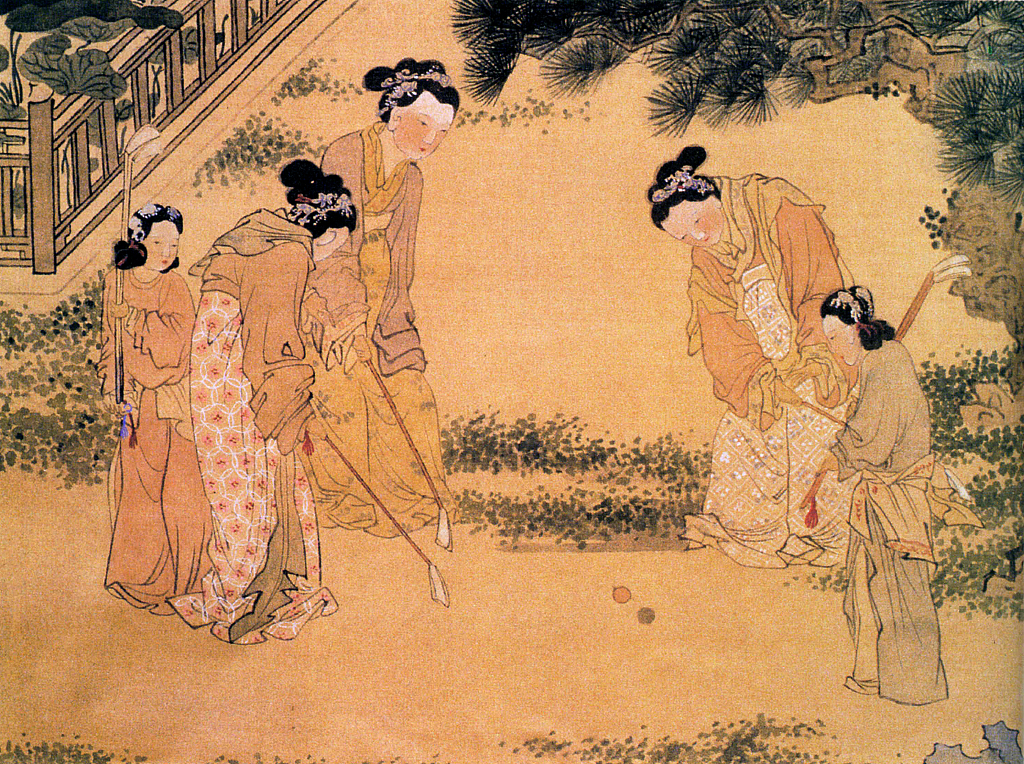Chuiwan was an ancient Chinese ball sport similar to modern-day golf.
Chuiwan, as the name suggests, consists of "chui" (strike) and "wan" (ball). The earliest documented records of chuiwan can be traced back to 1282 in a work called "Wan Jing" (The Classic of Chuiwan), authored by a "Ning Zhizhai."
The precursor of chuiwan was the "budajiu" game of the Tang Dynasty (618-907), which was similar to modern-day field hockey and involved strong physical competition. During the Song Dynasty (960-1279), budajiu gradually transformed from a competitive sport played on the same field to a non-competitive game where players took turns hitting the ball. The goal was changed to a hole, and the name evolved to "buji" and "chuiwan."

Housed in the Shanghai Museum, a Chinese painting from the Ming Dynasty depicts noble ladies playing chuiwan. /CFP
Housed in the Shanghai Museum, a Chinese painting from the Ming Dynasty depicts noble ladies playing chuiwan. /CFP
Because chuiwan did not require intense physical activity, it was a leisure activity favored by women of the time. The "Portrait of Noble Ladies" by Ming Dynasty (1368-1644) artist Du Jin, now held in the Shanghai Museum, depicts the leisure activities of noble women during the Ming Dynasty, including playing musical instruments, watching fish, visiting gardens, playing cuju (a form of football), and playing chuiwan.
The chuiwan court in the painting is a simple area in the courtyard, without any special facilities. This may have been the characteristic of chuiwan in wealthy households during the Ming Dynasty – it did not require elaborate structures, only a few holes dug in the garden among the flowers and trees were needed for chuiwan activities.